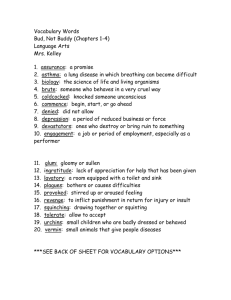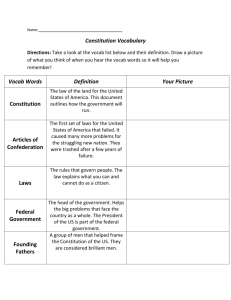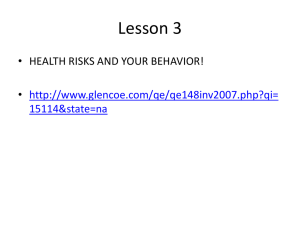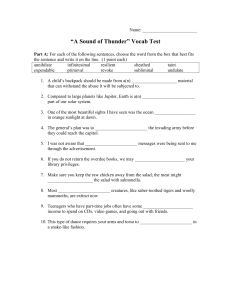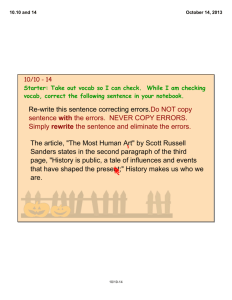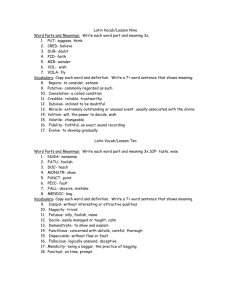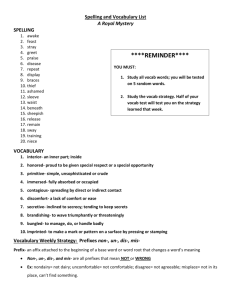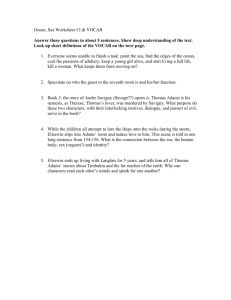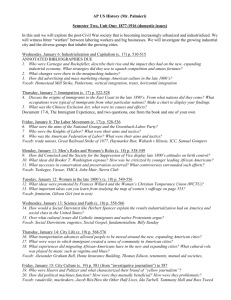AP US History (Mr
advertisement
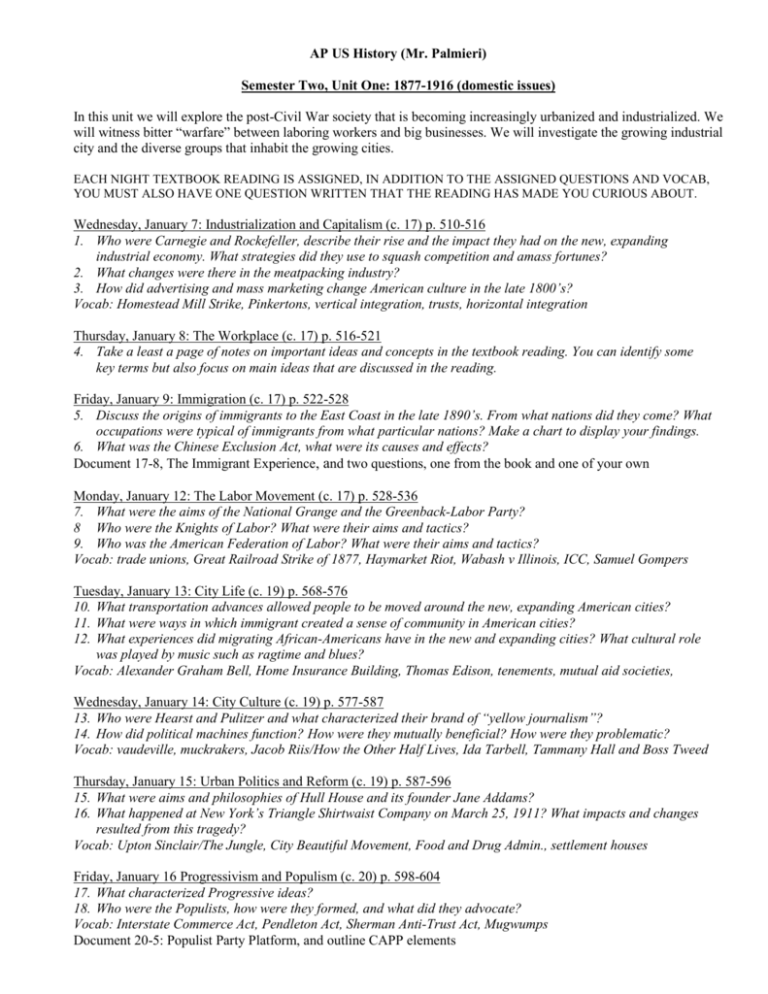
AP US History (Mr. Palmieri) Semester Two, Unit One: 1877-1916 (domestic issues) In this unit we will explore the post-Civil War society that is becoming increasingly urbanized and industrialized. We will witness bitter “warfare” between laboring workers and big businesses. We will investigate the growing industrial city and the diverse groups that inhabit the growing cities. EACH NIGHT TEXTBOOK READING IS ASSIGNED, IN ADDITION TO THE ASSIGNED QUESTIONS AND VOCAB, YOU MUST ALSO HAVE ONE QUESTION WRITTEN THAT THE READING HAS MADE YOU CURIOUS ABOUT. Wednesday, January 7: Industrialization and Capitalism (c. 17) p. 510-516 1. Who were Carnegie and Rockefeller, describe their rise and the impact they had on the new, expanding industrial economy. What strategies did they use to squash competition and amass fortunes? 2. What changes were there in the meatpacking industry? 3. How did advertising and mass marketing change American culture in the late 1800’s? Vocab: Homestead Mill Strike, Pinkertons, vertical integration, trusts, horizontal integration Thursday, January 8: The Workplace (c. 17) p. 516-521 4. Take a least a page of notes on important ideas and concepts in the textbook reading. You can identify some key terms but also focus on main ideas that are discussed in the reading. Friday, January 9: Immigration (c. 17) p. 522-528 5. Discuss the origins of immigrants to the East Coast in the late 1890’s. From what nations did they come? What occupations were typical of immigrants from what particular nations? Make a chart to display your findings. 6. What was the Chinese Exclusion Act, what were its causes and effects? Document 17-8, The Immigrant Experience, and two questions, one from the book and one of your own Monday, January 12: The Labor Movement (c. 17) p. 528-536 7. What were the aims of the National Grange and the Greenback-Labor Party? 8 Who were the Knights of Labor? What were their aims and tactics? 9. Who was the American Federation of Labor? What were their aims and tactics? Vocab: trade unions, Great Railroad Strike of 1877, Haymarket Riot, Wabash v Illinois, ICC, Samuel Gompers Tuesday, January 13: City Life (c. 19) p. 568-576 10. What transportation advances allowed people to be moved around the new, expanding American cities? 11. What were ways in which immigrant created a sense of community in American cities? 12. What experiences did migrating African-Americans have in the new and expanding cities? What cultural role was played by music such as ragtime and blues? Vocab: Alexander Graham Bell, Home Insurance Building, Thomas Edison, tenements, mutual aid societies, Wednesday, January 14: City Culture (c. 19) p. 577-587 13. Who were Hearst and Pulitzer and what characterized their brand of “yellow journalism”? 14. How did political machines function? How were they mutually beneficial? How were they problematic? Vocab: vaudeville, muckrakers, Jacob Riis/How the Other Half Lives, Ida Tarbell, Tammany Hall and Boss Tweed Thursday, January 15: Urban Politics and Reform (c. 19) p. 587-596 15. What were aims and philosophies of Hull House and its founder Jane Addams? 16. What happened at New York’s Triangle Shirtwaist Company on March 25, 1911? What impacts and changes resulted from this tragedy? Vocab: Upton Sinclair/The Jungle, City Beautiful Movement, Food and Drug Admin., settlement houses Friday, January 16 Progressivism and Populism (c. 20) p. 598-604 17. What characterized Progressive ideas? 18. Who were the Populists, how were they formed, and what did they advocate? Vocab: Interstate Commerce Act, Pendleton Act, Sherman Anti-Trust Act, Mugwumps Document 20-5: Populist Party Platform, and outline CAPP elements Monday, January 19: MLK JR DAY, no class Tuesday, January 20: RESEARCH PAPER PROPOSAL AND INITIAL THESIS DUE Write one half to one page single spaced page describing the focus and scope of your topic, narrowed by event, time period, or perspective. What will you be focusing on in this paper? Describe what you have done to this point and what more you need to do. Propose a thesis statement for your project based on your initial research. A good thesis statement states something that can be argued on both sides with you taking a position. You are stating what you will prove in your paper. Wednesday, January 21: The Turbulent 1890’s (c. 20) p. 605-612 19. Discuss the economic and political difficulties facing the nation and Pres. Cleveland in his 2nd term (1892-96). 20. What devices were used by Democrats in the South to hold on to political power and keep blacks from voting? 21. How did the Republican McKinley defeat the Democrat Bryan in the presidential election of 1896? Vocab: Coxey’s Army, free silver, JP Morgan, direct primary, Jim Crow laws, Plessy vs. Fergusson “Cross of Gold” Thursday, January 22: Progressivism and Teddy Roosevelt (c. 20) p. 612-620 22. Discuss Teddy Roosevelt’s attitude and actions with regard to trusts. 23. What were central to the ideas of W.E.B. Dubois and the Niagara Movement? In what ways did they differ from the ideas of Booker T. Washington? Vocab: Ida B. Wells, National Consumers League/Florence Kelley, Muller vs. Oregon, NAACP, Robert LaFollette, The Wobblies(IWW), Bill Haywood, Pullman Strike, Friday, January 23: Wilson and Reform (c. 20) p. 620-626 24 Discuss the participants in and results of the election of 1912. 25. Discuss Wilson’s stance on trusts, Progressive reform, labor, and the role of the federal government. 26. How did the Federal Reserve Board function, what were its goals and purposes? Vocab: Eugene Debs, Ludlow Massacre Monday, January 26: Unit One Review Tuesday, January 27: UNIT ONE TEST Review Questions for Unit One: A) Why were class divisions widening? Where do we see this widening? B) What factors led to acceleration of industrialization in the years following the Civil War and what effects did this industrialization have on American politics, economics, and society? C) What fundamental ideologies were displayed by the Labor Movement and labor organizations? D) In what ways did the American city change during this period? E) In what ways were the lives of the working classes, the middle class, and the wealthy growing increasingly different during this period? F) What new outlets were created in this time period for Americans who felt their voices were not being heard?
